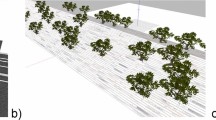Abstract
This paper describes the current status of a program to develop an automated forced landing system for a fixed-wing Unmanned Aerial Vehicle (UAV). This automated system seeks to emulate human pilot thought processes when planning for and conducting an engine-off emergency landing. Firstly, a path planning algorithm that extends Dubins curves to 3D space is presented. This planning element is then combined with a nonlinear guidance and control logic, and simulated test results demonstrate the robustness of this approach to strong winds during a glided descent. The average path deviation errors incurred are comparable to or even better than that of manned, powered aircraft. Secondly, a study into suitable multi-criteria decision making approaches and the problems that confront the decision-maker is presented. From this study, it is believed that decision processes that utilize human expert knowledge and fuzzy logic reasoning are most suited to the problem at hand, and further investigations will be conducted to identify the particular technique/s to be implemented in simulations and field tests. The automated UAV forced landing approach presented in this paper is promising, and will allow the progression of this technology from the development and simulation stages through to a prototype system.
Similar content being viewed by others
Explore related subjects
Discover the latest articles, news and stories from top researchers in related subjects.References
CASA, Visual Flight Rules Guide, 2nd ed. Civil Aviation Safety Authority Australia, Canberra (2007)
Fitzgerald, D., Mejias, L., Eng, P., Liu, X.: Towards flight trials for an autonomous uav emergency landing using machine vision. In: Australasian Conference on Robotics and Automation, Brisbane, Australia, December 2007
Redelinghuys, C.: A flight simulation algorithm for a parafoil suspending an air vehicle. J. Guid. Control Dyn. 30, 791–803 (2007)
Froeschner, C.P.: UAS—Flying safety. http://findarticles.com/ (2008). Accessed 27 Nov 2008
Fitzgerald, D.: Candidate landing site selection for uav forced landings using machine vision. Ph.D. dissertation, Queensland University of Technology. School of Engineering Systems (2007)
Mejias, L., Fitzgerald, D., Eng, P., Liu, X.: Aerial vehicles. I-Tech Education and Publishing, 2009, ch. Forced Landing Technologies for Unmanned Aerial Vehicles: Towards Safer Operations, pp. 415–440
Australian Bureau of Meteorology: The wind across Australia. http://www.bom.gov.au/ (2007). Accessed 24 June 2007
Eng, P., Mejias, L., Fitzgerald, D., Walker, R.: Simulation of a fixed-wing uav forced landing with dynamics path planning. In: Australasian Conference on Robotics and Automation, Brisbane, Australia, December 2007
Nelson, R.C.: Flight Stability and Automatic Control, 2nd ed. McGraw-Hill Higher Education, New York (1998)
LaValle, S.M.: Planning Algorithms. Cambridge University Press, New York (2006)
Dubins, L.E.: On curves of minimal length with a constraint on average curvature with prescribed initial and terminal positions and tangents. Am. J. Math. 79, 471–477 (1957)
Ambrosino, G., Ariola, M., Ciniglio, U., Corraro, F., Pironti, A., Virgilio, M.: Algorithms for 3-d uav path generation and tracking. In: 45th IEEE Conference on Decision & Control, pp. 5275–5280. San Diego, CA (2006)
Park, S.: Avionics and control system development for mid-air rendezvous of two unmanned aerial vehicles. Ph.D. dissertation, Department of Aeronautics and Astronautics, M.I.T (2004)
Park, S., Deyst, J., How, J.P.: Performance and lyapunov stability of a nonlinear path-following guidance method. J. Guid. Control Dyn. 30, 1718–1728 (2007)
Brandon, J.: Forced landing procedures. http://www.auf.asn.au/emergencies/forcedlanding.html. Accessed 25 March 2007
Cox, T.H., Nagy, C.J., Skoog, M.A., Somers, I.A.: Civil uav capability assessment. NASA, Tech. Rep., draft Version (2004)
Brans, J.-P., Mareschal, B.: Promethee methods. In: Figueira, J., Greco, S., Ehrgott, M. (eds.) Multiple Criteria Decision Analysis: State of the Art Surveys. Springer, New York (2005)
Dyer, J.S.: Maut—multiattribute utillity theory. In: Figueira, J., Greco, S., Ehrgott, M. (eds.) Multiple Criteria Decision Analysis: State of the Art Surveys. Springer, New York (2005)
von Neumann, J., Morgenstern, O.: Theory of Games and Economic Behavior. Princeton University Press, Princeton (1944)
Grabisch, M., Roubens, M.: Application of the choquet integral in multicriteria decision making. In: Grabisch, T.M.M., Sugeno, M. (eds.) Fuzzy Measures and Integrals - Theory and Applications, pp. 348–374. Physica Verlag, Würzburg (2000)
Greco, S., Matarazzo, B., Slowinski, R.: Decision rule approach. In: Figueira, J., Greco, S., Ehrgott, M. (eds.) Multiple Criteria Decision Analysis: State of the Art Surveys. Springer, New York (2005)
Graco, S., Matarazzo, B., Slowinski, R.: Rough approximation by dominance relations. Int. J. Intell. Syst. 17, 153–171 (2002)
Bouyssou, D.: Ranking methods based on valued preference relations: a characterization of the net flow method. Eur. J. Oper. Res. 60(1), 61–67 (1992). Available http://www.sciencedirect.com/science/article/B6VCT-48NBG9R-1TT/2/3590a17dce5c9186172b2099f2c50f47
Author information
Authors and Affiliations
Corresponding author
Rights and permissions
About this article
Cite this article
Eng, P., Mejias, L., Liu, X. et al. Automating Human Thought Processes for a UAV Forced Landing. J Intell Robot Syst 57, 329–349 (2010). https://doi.org/10.1007/s10846-009-9389-8
Received:
Accepted:
Published:
Issue Date:
DOI: https://doi.org/10.1007/s10846-009-9389-8




